Key Takeaways
- Daguerreotypes were an early form of photography that captured subtle details and often showcased sepia or soft metallic tones.
- Vintage clothing captured in daguerreotypes revolved around thoughtful choices of fabric, silhouette, and accessories.
- Modern-day style enthusiasts can take cues from daguerreotype fashion to create timeless looks, blending old-world charm with contemporary flair.
- Color coordination and careful lighting remain key factors in reproducing the sepia effect for modern photo shoots or personal projects.
- Preserving vintage attire and understanding historical context help maintain the authenticity and longevity of daguerreotype-inspired fashion.
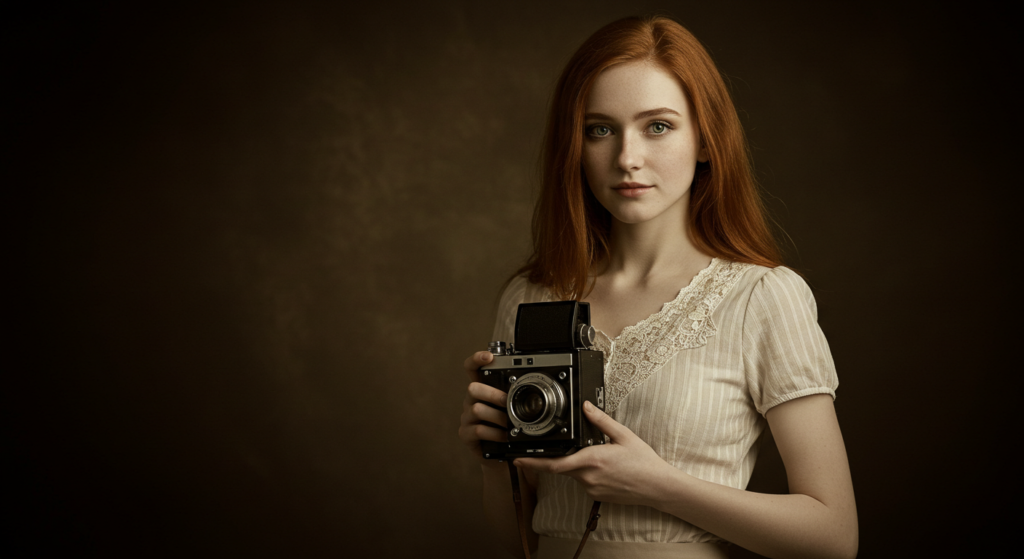
In an age where high-resolution selfies dominate social media, there is something inherently enchanting about the daguerreotype. This photographic process, invented in the 19th century, captured fleeting moments in time with a mesmerizing sepia or metallic tint. Unlike digital photographs that offer a vast spectrum of colors, daguerreotypes focused on tonal nuances and gave clothing an almost ethereal quality.
The appeal of daguerreotype fashion goes beyond mere nostalgia. It invites us to explore how the subtle interplay of color, silhouette, and craftsmanship can create artful statements. From choosing fabrics that interact beautifully with sepia tones to understanding the timeless silhouettes that flatter all body shapes, there is a wealth of knowledge to be gained.
Below, you’ll find 14 comprehensive sections with three subsections each. They delve deep into various aspects of daguerreotype-inspired fashion, including styling techniques, color considerations, fabric choices, accessory ideas, and ways to incorporate modern twists into vintage aesthetics. Whether you are a historian, a fashion enthusiast, or simply curious about the charm of old-world photography, this in-depth guide promises to reveal valuable insights.
The Evolution of Daguerreotype Fashion
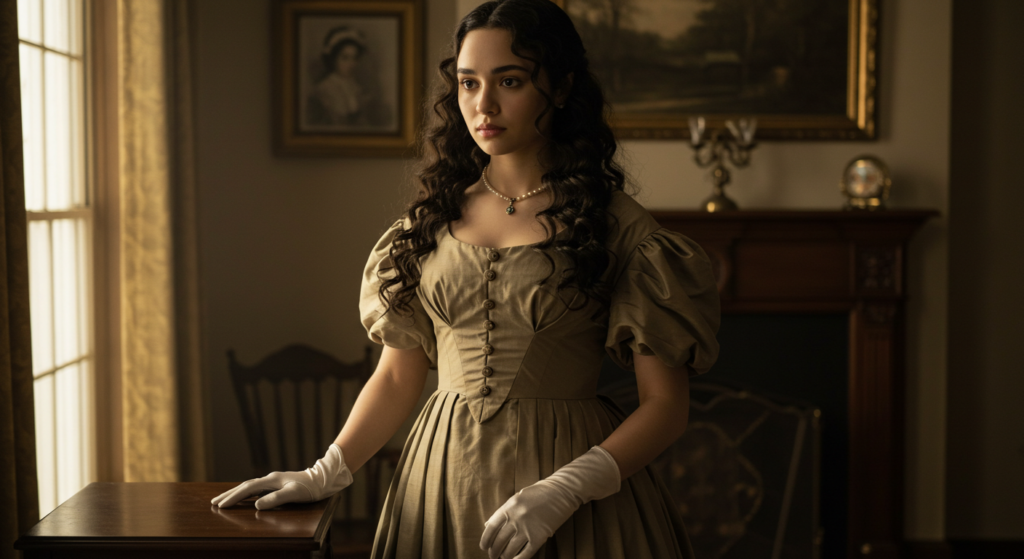
The Birth of Daguerreotype Portraiture
When Louis Daguerre unveiled his ingenious photographic process in 1839, it revolutionized visual documentation. People no longer had to sit for laborious painted portraits. Daguerreotypes became the go-to method for capturing likeness with unprecedented clarity.
- Sharp Detail: Daguerreotypes showcased minute details like fabric weaves and stitching.
- Sepia Tones: Because of the chemical processes, many early images showed warm or metallic hues.
- Status Symbol: Having a daguerreotype portrait was a sign of prestige.
The Social Context of Dress
Fashion within daguerreotypes often conveyed societal standing. Women’s dresses highlighted elegant silhouettes, while men’s attire focused on tailored jackets and carefully knotted cravats. In many cases, the choice of clothing had as much to do with personal style as it did with projecting social status.
- Refined Materials: Silk and velvet were popular among the affluent.
- Structured Garments: Corsets, boned bodices, and stiff crinolines ensured a distinct shape.
- Subdued Colors: Pastels and earth tones often translated best in sepia photography.
Shifts in Popular Silhouettes
From the mid-19th century to the late 1800s, silhouettes changed notably. Women’s skirts expanded, then contracted, while men’s suits evolved from the long frock coat to shorter lounge jackets. Each shift influenced how clothing appeared on daguerreotype plates.
- Bulky vs. Sleek: Larger skirts created dramatic contrasts in sepia images, while narrower silhouettes revealed more detail in the torso.
- Collars and Necklines: High collars for women and starched collars for men became staples.
- Layering: Multiple layers added depth and visual interest in portraits.
The Sepia Effect: Understanding Its Charm
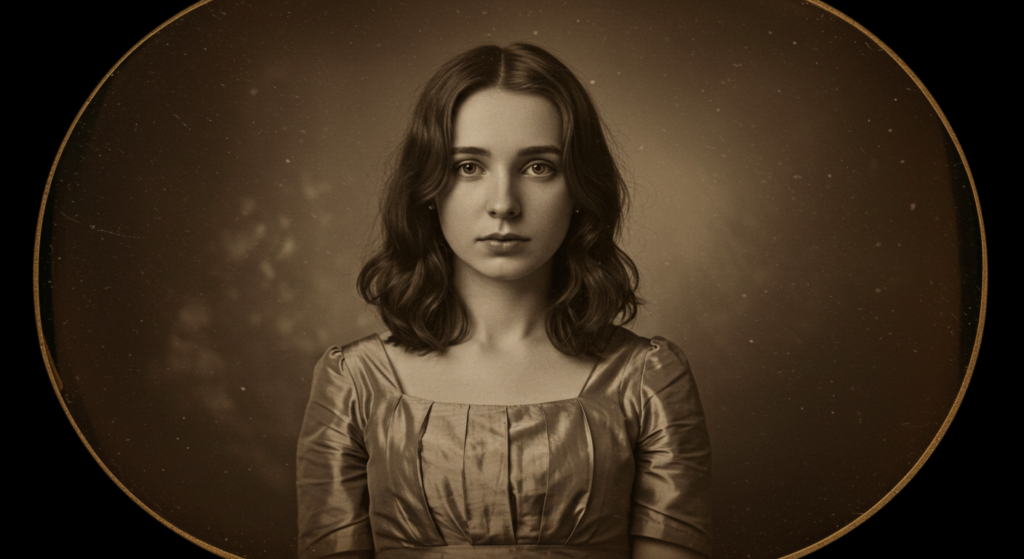
The Chemical Alchemy
Daguerreotypes employed a silver-plated copper sheet coated with chemicals. This process created an image that could appear differently when viewed from varying angles. For fashion enthusiasts, the result was a shimmering metallic or warm sepia-like tone that played beautifully with certain fabrics.
- Reflective Surface: Some daguerreotypes look like mirrors from specific angles.
- Soft Transitions: The process often softened edges, lending a dreamy vibe.
- Color Muting: Bold colors became subdued, leading to a more unified palette.
Sepia’s Influence on Fashion Perception
Sepia tones could flatten or emphasize certain hues. This effect made some garments appear darker or lighter than in real life. The mysterious depth of sepia also elevated the drama of lace trims, embroidery, or beading.
- Dark Fabric = More Depth: Deep colors, like navy or burgundy, became moody yet elegant.
- Light Fabric = Ethereal Glow: Cream or off-white garments appeared angelic and soft.
- Subtle Embellishments: Ribbons or ruffles were accentuated under the unique daguerreotype lighting.
Modern Appreciation of the Sepia Look
Today, we look back on these images with a sense of romanticism. Photographers often recreate sepia filters to mimic vintage styles. In fashion photography, sepia can create a warm ambiance and highlight intricate details.
- Heritage Shoots: Vintage-themed weddings or heritage-style portraits often incorporate sepia filters.
- Artistic Appeal: Designers replicate old styles to capture timelessness.
- Nostalgic Branding: Boutique labels sometimes use sepia-tinted visuals to evoke history and authenticity.
The Role of Fabric Choice for Vintage Aesthetics

Choosing Fabric for Authentic Representation
Back in the day, natural fibers like cotton, silk, wool, and linen dominated wardrobes. Recreating an authentic daguerreotype look requires similar choices. The right materials respond to lighting differently, capturing the understated charm that defines these vintage images.
- Cotton: Breathable, soft, and perfect for day dresses.
- Silk: A luxurious option that reflects light subtly in daguerreotype-style photos.
- Wool: Holds structure well, ideal for tailored garments such as jackets and coats.
Texture Matters
Daguerreotypes highlighted texture, so choosing fabrics with distinct weaves or finishes can replicate that historic essence. Subtle sheen, matte surfaces, or natural crinkles add visual interest under a sepia filter.
- Brocade and Damask: Intricate patterns that photograph with depth.
- Velvet: Lends a plush, opulent effect in pictures.
- Lace Overlays: Delicate overlays create dimensionality and historical flair.
Balancing Comfort and Authenticity
While many historic garments were more about shape than comfort, modern reproductions can strike a balance. You can add discreet zippers, modern stretch materials, or lightweight linings without compromising aesthetics.
- Breathable Linings: Keep the authentic outer fabric but ensure comfort inside.
- Flexible Corsets: For re-enactments, consider corsets with gentle boning.
- Seasonal Adaptations: Swap heavier wool for lighter blends in warm climates.
Traditional Palettes in 19th Century Photography

Subdued Earth Tones
Browns, grays, and dark greens were common in everyday attire, partly due to dye availability. Under sepia’s influence, these colors translated beautifully.
- Earthy Browns: Rich, grounding, and authentic to the era.
- Ashy Grays: Provided a neutral base, suitable for layering.
- Deep Greens: Evoked a refined, subtle elegance without overpowering the portrait.
Elegant Jewel Tones
For more formal occasions, jewel tones like burgundy, navy, and aubergine added sophistication. While these hues might appear darker in daguerreotypes, they contributed to a striking tonal interplay.
- Burgundy Velvet: Perfect for evening bodices or men’s waistcoats.
- Navy Satin: Combined regality with a gentle sheen.
- Plum Twills: A subdued purple that hinted at luxury without being garish.
Soft Pastels and Whites
Pastels and whites provided a stark contrast against the metallic background. They read as luminous, highlighting the delicate aspects of clothing, like lace or ruffled accents.
- Pale Pink: Often used for youthful looks.
- Cream or Ivory: Iconic for wedding gowns or high-society portraits.
- Misty Blue: Captured a cool tranquility, especially under sepia.
Accessorizing for Daguerreotype Shoots
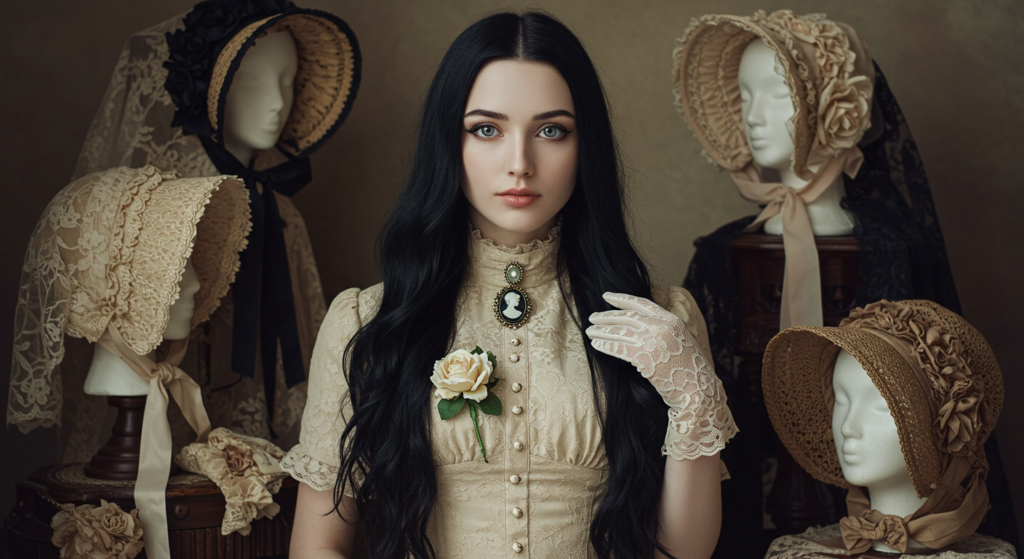
Hats, Bonnets, and Veils
Headwear was not just a shield from the elements; it was an essential style statement. Bonnets, wide-brimmed hats, and veils gave an instant 19th-century flair.
- Bonnets with Ribbon: Ladies often adorned these with decorative bows and flowers.
- Top Hats: A quintessential men’s accessory for formal events.
- Veils: Added a touch of mystery and drama in portraits.
Jewelry That Complements Sepia
Jewelry in daguerreotypes often showcased pearls, cameo brooches, or lockets. These pieces popped against subdued clothing. Modern daguerreotype-inspired shoots can use similar accessories for authenticity.
- Pearl Strings: Timeless and understated.
- Cameos: Add a dash of historical romance.
- Lockets: Evoke familial sentiments, often containing miniature portraits.
Gloves, Fans, and Parasol
Small accessories like gloves, fans, and parasols added layers to the overall composition. They conveyed social graces and offered a structured pose for the subject.
- Lace Gloves: Elegant and easily noticeable in a sepia-toned portrait.
- Hand Fans: Decorative yet functional, perfect for portrait posing.
- Parasol Handles: Intricate designs that showcased craftsmanship.
Styling Techniques for Timeless Portraits
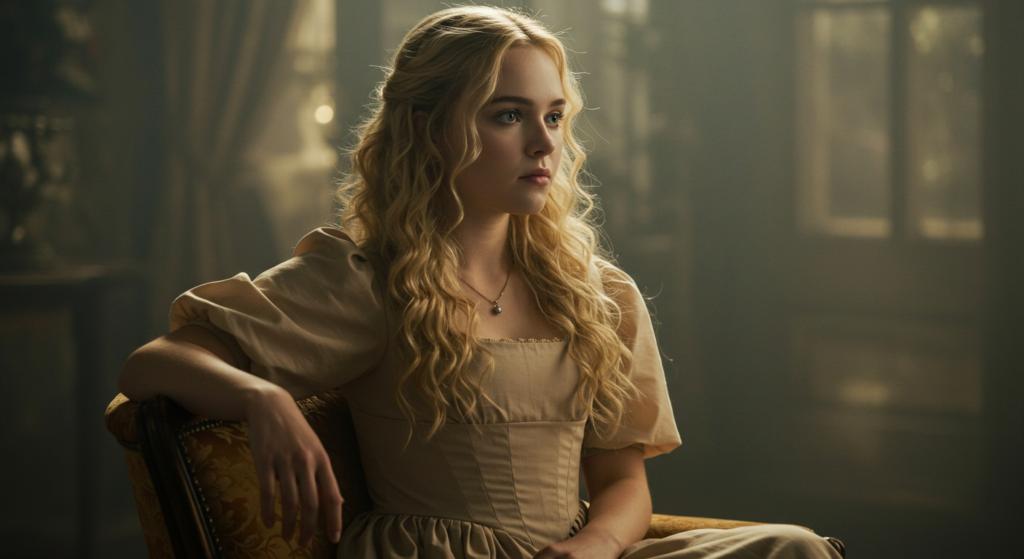
Pose and Posture
Early photographic techniques required the subject to remain still for several seconds. This led to carefully choreographed poses. For a modern recreation:
- Supported Pose: Use furniture or a subtle armrest to avoid stiffness.
- Straight Spine: Emphasize the waist and silhouette.
- Gentle Expressions: A slight smile can be more comfortable to hold than a wide grin.
Subtle Makeup and Hair
While daguerreotype subjects did not have the benefit of HD makeup, modern interpretations can use subtle methods to achieve a soft, classic look.
- Neutral Palettes: Light foundation, minimal contouring.
- Soft Hair Styling: Loose updos or gentle waves suit both historical and modern sensibilities.
- Avoid Harsh Lines: Overly heavy eyeliner might appear too stark in sepia filters.
Layering and Fabric Draping
Layering garments can add dimension in sepia images. Consider draping shawls, scarves, or outer layers to recreate the multi-layered essence of the era.
- Contrasting Textures: Pair a smooth silk slip with a heavier brocade overdress.
- Strategic Draping: Accentuate the waist or shoulders.
- Pinning and Tucking: Secure folds to maintain a refined silhouette.
The Influence of Lighting in Historical Shoots

Natural Light vs. Artificial Light
Daguerreotypes were largely dependent on natural light. Modern enthusiasts can use north-facing windows or soft diffused lighting to replicate a similar glow.
- Window Light: Ideal for gentle shadows and minimal glare.
- Reflectors: A simple white board can bounce light, mimicking older studio conditions.
- Avoid Direct Sun: Prevents harsh highlights that can flatten the sepia effect.
Studio Setups
Historical studios used overhead skylights or elaborate backdrops to capture the subject. A carefully arranged environment can evoke the classic portrait style.
- Antique Furniture Props: Chairs or small tables reflect the 19th-century vibe.
- Plain Backdrops: Neutral walls or draped fabrics keep focus on the subject.
- Dramatic Shadows: Position the subject to get soft shadows, hinting at period drama.
Choosing the Right Aperture and Exposure
Though daguerreotypes required long exposures, modern cameras can simulate that atmospheric feel with controlled settings.
- Low Aperture (f/2.8 to f/4): Creates a gentle depth of field that blurs the background.
- Longer Exposure: If shooting in low light, a tripod helps avoid camera shake.
- Post-Processing: A slight warm tint or sepia preset can complete the look.
Preservation and Restoration of Vintage Looks

Caring for Antique Garments
Authentic 19th-century garments must be stored with care. Acid-free tissue paper, breathable garment bags, and climate-controlled conditions help preserve delicate fabrics.
- Refrain from Hanging: Heavy dresses can stretch if hung.
- Avoid Direct Sunlight: UV rays weaken fibers over time.
- Professional Cleaning: Seek experts in historical garment restoration.
Repairing Tears and Stains
Minor tears or stains are common in antique clothing. Restoration may include hand-stitching tears with period-appropriate thread, or using mild cleaning agents.
- Test Cleaning Solutions: Always test on an inconspicuous area first.
- Stabilize Loose Fibers: Gentle adhesives or patching from behind the garment.
- Document the Process: Keep notes to track each repair for reference.
Modern Reproductions
If original items are too fragile, consider modern reproductions. Skilled tailors can replicate vintage silhouettes using updated techniques.
- Custom Patterns: Drafted from antique sources or museum references.
- Advanced Sewing Methods: Hidden zippers, reinforced seams, or improved lining.
- Ethical Fabric Choices: Organic cotton or peace silk can meet both style and sustainability needs.
Incorporating Modern Twists into Old-Fashioned Styles

Mixing Vintage and Contemporary Pieces
There’s no hard rule that says you must dress head-to-toe in vintage to achieve daguerreotype charm. Blending new and old can yield stylish, fresh results.
- Modern Jeans + Vintage Blouse: The interplay of casual denim with a lace top nods to the past.
- Contemporary Footwear + Petticoat Skirts: A quirky combination that looks spontaneous.
- Statement Bag + 19th-Century Jacket: Merge modern color-blocking with an antique silhouette.
Playing with Contrast
Contrasting color or texture can elevate a look. A stiff corseted top might pair well with relaxed modern trousers. The difference in fit and fabric draws the eye while maintaining a vintage essence.
- Metallic Accents: Use modern metallic belts or jewelry to highlight traditional silhouettes.
- Pattern Clash: Striped modern pants with a floral Victorian-style blouse.
- Leather Jackets: Over a Victorian-inspired lace dress for an edgy twist.
Updating Hair and Makeup
Classic hairstyles can be reinterpreted with today’s products and techniques.
- Messy Buns: A carefree spin on a structured Victorian updo.
- Sleek Ponytails: Highlight strong silhouettes without adding visual clutter.
- Modern Makeup: Play with tinted lip balm or subtle highlighters that complement sepia filters.
Advanced Techniques to Reproduce Daguerreotype Tones

Digital Editing Secrets
Modern technology allows us to mimic the effect of daguerreotypes through photo editing software.
- Sepia Filters: Built-in presets provide a quick fix.
- Layer Masks: Add texture overlays, like “film grain,” to emulate the original plate’s speckles.
- Color Curves: Fine-tune midtones to achieve that distinctive warm cast.
Chemical Processes and Film Photography
Some photographers experiment with alternative processes like wet plate collodion or tintypes to recapture the look of early photography. Though these are not daguerreotypes, they share a similar historic charm.
- Wet Plate Collodion: Creates high-contrast images with a vintage feel.
- Tintypes: Produce a direct positive on metal, reminiscent of daguerreotype’s reflective quality.
- Cyanotypes: Though typically blue, they can be toned to warmer hues for a sepia-like result.
Print and Frame Considerations
Once you have your image, printing and framing can elevate it further.
- Metal Prints: Modern metal printing can mimic the reflective nature of daguerreotypes.
- Vintage-Style Frames: Ornate gilded frames or distressed wood echo the 19th century.
- Archival Quality: Use acid-free mat boards to prevent discoloration.
Perfecting the Right Silhouettes

Hourglass Focus
19th-century womenswear often accentuated the waist, creating an hourglass figure. Modern enthusiasts can adapt this shape with corset belts or structured dresses.
- Cinched Waistlines: Belts or built-in seams for emphasis.
- Full Skirts: Circle skirts can replicate the effect of crinolines without the bulk.
- Shoulder Detailing: Puff or bell sleeves draw attention to the upper body.
Men’s Tailoring Essentials
Daguerreotype-era menswear showcased fitted jackets, tidy trousers, and crisp collared shirts. Achieving this look today is a matter of clean lines and carefully chosen fabrics.
- Tailored Blazers: Slimming silhouettes with minimal shoulder padding.
- Vest Layers: Pair with a crisp shirt and a subtle tie for authenticity.
- High-Waisted Trousers: Elongates the leg, matching historical proportions.
Elegant Outerwear
Coats and cloaks were essential for the 19th century, especially for outdoor daguerreotype sessions.
- Capes and Cloaks: Dramatic shapes that flow beautifully in photographs.
- Fitted Coats: Cinched at the waist, flaring at the hem.
- Hooded Overcoats: Practical, yet reminiscent of a bygone era’s style.
Combining Colors for Sepia Scenes

Harmonizing Warm and Cool Tones
Though daguerreotypes lean toward warm hues, combining warm and cool colors in the outfit can create interesting visual tension once translated into sepia.
- Terracotta + Sage Green: Balances earthiness with a soft hint of coolness.
- Beige + Navy: A stable contrast that looks timeless.
- Rust + Teal: Vibrant in color, but nuanced in sepia.
Monochromatic Approaches
Sometimes simplicity is key. Choose a single color family and vary the shades for an understated, classic look.
- All-Brown Ensemble: Different browns can layer to create dimension.
- Black and Gray Mix: Ideal for a moody, dramatic portrait.
- Pastel Palette: Combine pale pink, lilac, and cream for a delicate, dreamy atmosphere.
Using Accent Pieces
A single pop of color can transform the entire vibe of an outfit. In sepia, that pop might become a subtle highlight or a darker patch, depending on the color.
- Scarves or Sashes: Tied around the waist or neck for a focal point.
- Contrasting Collar or Cuffs: Draws attention to the face and hands.
- Small Embellishments: Embroidered motifs that catch the eye.
Collecting and Curating Daguerreotype Fashion Pieces

Where to Find Authentic Items
Estate sales, vintage shops, and online auctions can be treasure troves. Patience is key, and so is verifying authenticity.
- Check Labeling: Authentic 19th-century items usually lack modern labels.
- Inspect Seams: Hand-stitched or old machine stitches can hint at genuine age.
- Provenance: Ask about the garment’s history if available.
Building a Thematic Collection
Focus on a specific era or color palette to maintain cohesion. This strategy helps ensure your collection has consistent aesthetics.
- Era-Focused: For instance, concentrate on 1850s ball gowns or 1860s day dresses.
- Color-Focused: Collect garments in muted tones for easier mixing and matching.
- Occasion-Focused: Formal wear, casual dresses, or wedding attire from a certain period.
Display and Storage
Curating extends to how you store or display these items. Proper care preserves both the garment and its historical essence.
- Glass-Front Cabinets: Showcase prized pieces while protecting them from dust.
- Mannequins or Dress Forms: Avoid direct sunlight and ensure stable humidity levels.
- Rotation System: Change displayed pieces periodically to let fabrics rest.
Building a Daguerreotype-Inspired Wardrobe

Essentials for Women
Key items can form the base of a daguerreotype-inspired wardrobe.
- Corset or Corset Belt: To shape the torso elegantly.
- Flowy Skirts: Preferably with a bit of volume or layering options.
- High-Collar Blouses: Lace or embroidered details for period charm.
Essentials for Men
Structured, timeless garments become the backbone of a vintage-inspired look.
- Three-Piece Suit: Vest, jacket, and trousers in complementary tones.
- Classic Dress Shirts: Crisp collars, possibly detachable for authenticity.
- Structured Shoes: Leather brogues or boots with a vintage shape.
Capsule Wardrobe Concept
A well-thought-out capsule can be both practical and historically evocative.
- Interchangeable Pieces: Skirts that go with multiple blouses, suits that can be broken into separates.
- Neutral Base Colors: Browns, creams, and blacks that layer easily.
- Signature Accessories: A favorite bonnet, cameo brooch, or patterned vest to define your style.
Conclusion
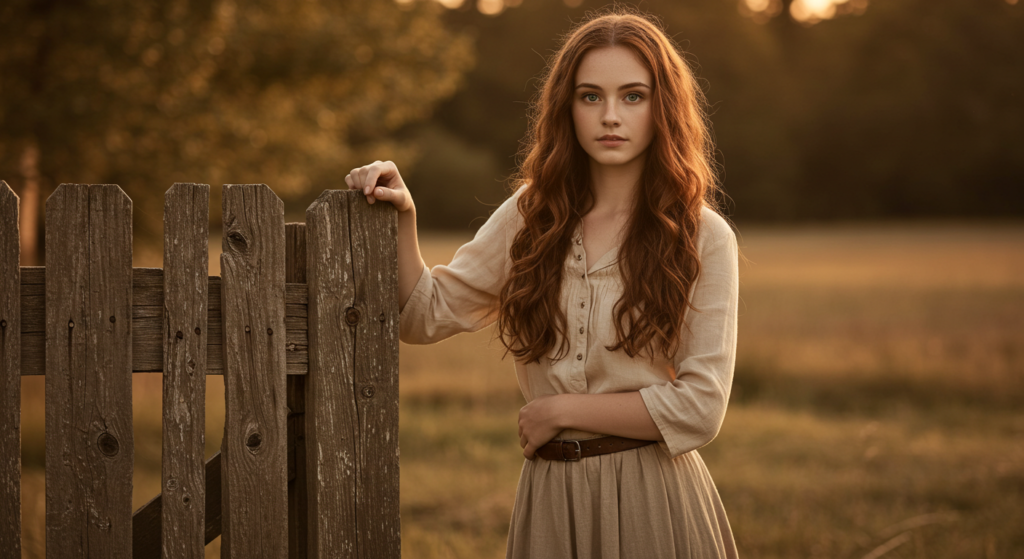
Embracing the world of daguerreotype fashion is a journey of discovery. It’s about more than old photographs; it’s the intersection of history, aesthetics, and personal expression.
The muted tones and meticulously crafted garments of the 19th century remind us that fashion can be an art form rooted in craftsmanship and timeless appeal.
By blending sepia-inspired color palettes, vintage silhouettes, and modern practicality, we can recreate that sepia snapshot of time in our own wardrobes and photographic endeavors.
Daguerreotype fashion isn’t about strictly reenacting the past. Instead, it’s about honoring the grace, detail, and warm mystique of a bygone era while adapting it to our modern world.
Whether you’re preparing for a styled photo shoot, building a vintage-inspired closet, or simply fascinated by the sepia charm, there’s always more to learn and explore.
The essence of daguerreotype fashion lies in its ability to fuse subtlety with sophistication—an eternal testament to the power of well-chosen clothing and the art of capturing a moment.
Summary Table
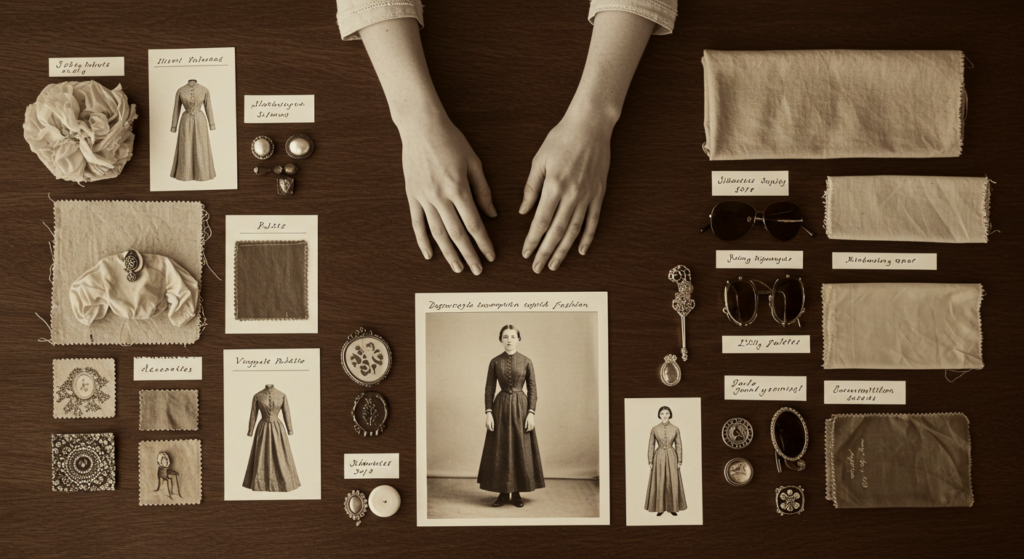
| Aspect | Key Points | Modern Relevance |
|---|---|---|
| Silhouettes | Hourglass and structured menswear | Corset belts, tailored blazers, fitted coats |
| Color Palettes | Earth tones, jewel shades, pastels | Mix warm + cool hues, monochromatic dressing |
| Fabric Choices | Natural fibers like cotton, silk, wool | Authentic reproduction, balancing comfort & style |
| Accessories | Hats, gloves, jewelry, fans | Adds historical flair, personalization, and dimension |
| Lighting & Photography | Soft natural light, vintage studio setups | Sepia filters, digital editing, alternative processes |
| Preservation & Restoration | Gentle storage, minor repairs, professional cleaning | Sustain vintage items and reintroduce them through modern adaptations |
| Modern Twists | Mixing vintage with contemporary wear | Ensure comfort, create visual interest, experiment with layering |
| Styling Techniques | Supported pose, subtle makeup, layered clothing | Combine historical references with practical modern strategies |
| Collecting Vintage | Estate sales, online auctions, authenticity checks | Thematic organization, dedicated display methods |
| Incorporating History | Draw inspiration from 19th-century silhouettes & materials | Respect original design while finding creative ways to interpret them |
FAQ

Q: Can I replicate a daguerreotype look without wearing strictly vintage clothes?
A: Absolutely. You can focus on key silhouettes and subdued color palettes. Modern pieces that mimic 19th-century cuts or textures work well. Add accessories like hats or gloves to accentuate the daguerreotype feel.
Q: What if I don’t have access to antique fabrics?
A: That’s totally fine. Many modern fabrics simulate the look of older textiles. A matte finish or subtle sheen can come close to historical appearances. Focus on natural fibers like cotton or silk blends to keep it authentic.
Q: How do I add a modern twist to daguerreotype-inspired outfits?
A: Try mixing contemporary shoes or statement bags with vintage silhouettes. Update hair and makeup techniques. Layer a vintage corset belt over a simple dress or pair antique accessories with a modern blazer.
Q: Is it expensive to build a daguerreotype-inspired wardrobe?
A: It depends on your approach. Searching for genuine antiques can be costly, but thrifting or creating your own garments with vintage patterns can be budget-friendly. Accessorizing is a cost-effective way to achieve the look.
Q: How can I capture a real daguerreotype photograph today?
A: The authentic daguerreotype process is labor-intensive and requires specialized chemicals and equipment. Many prefer alternative historical techniques like wet plate collodion or digital editing to achieve a similar effect.
Q: Do I need special lighting for a sepia-toned photo shoot?
A: Soft, diffused lighting is ideal. You can use window light or a basic studio setup with reflectors. If you want a genuine vintage feel, avoid overly bright or direct light that flattens your subject’s features.
Q: Will modern jewelry clash with a vintage look?
A: Not necessarily. Simplicity is the key. Choose jewelry with classic shapes or materials. If your modern pieces are minimal and complement the color scheme, they can blend seamlessly with daguerreotype-inspired attire.
Q: Do I have to mimic the hairstyles of the 19th century?
A: You can, but it’s optional. A low bun or a half-up style can hint at the era without strict adherence. Feel free to adapt historical styles using modern hair products or incorporate subtle braids.
Q: What’s the best way to store my daguerreotype-inspired clothes after a photoshoot?
A: Make sure they are clean and dry before storage. Use breathable garment bags or plastic containers with silica packets to reduce moisture. If the garments are delicate, consider acid-free tissue paper between layers.
Q: Are there color combinations to avoid when aiming for a sepia-themed shoot?
A: Very bright neon hues can appear jarring in sepia. Stick to earthy, muted, or jewel tones for a more coherent effect. Experiment with one bold accent if you want to add a pop of contrast in the final photo.
With these insights, you’re now equipped to explore the enchanting world of daguerreotype fashion. Whether you’re staging a period-inspired photoshoot, revamping your wardrobe, or simply admiring the sepia glow of vintage images, remember that the essence lies in attention to detail and timeless style. The 19th century may be long past, but its fashion legacy endures in every cinched waist, swirling skirt, and elegantly crafted accessory—all waiting to be rediscovered and reimagined.
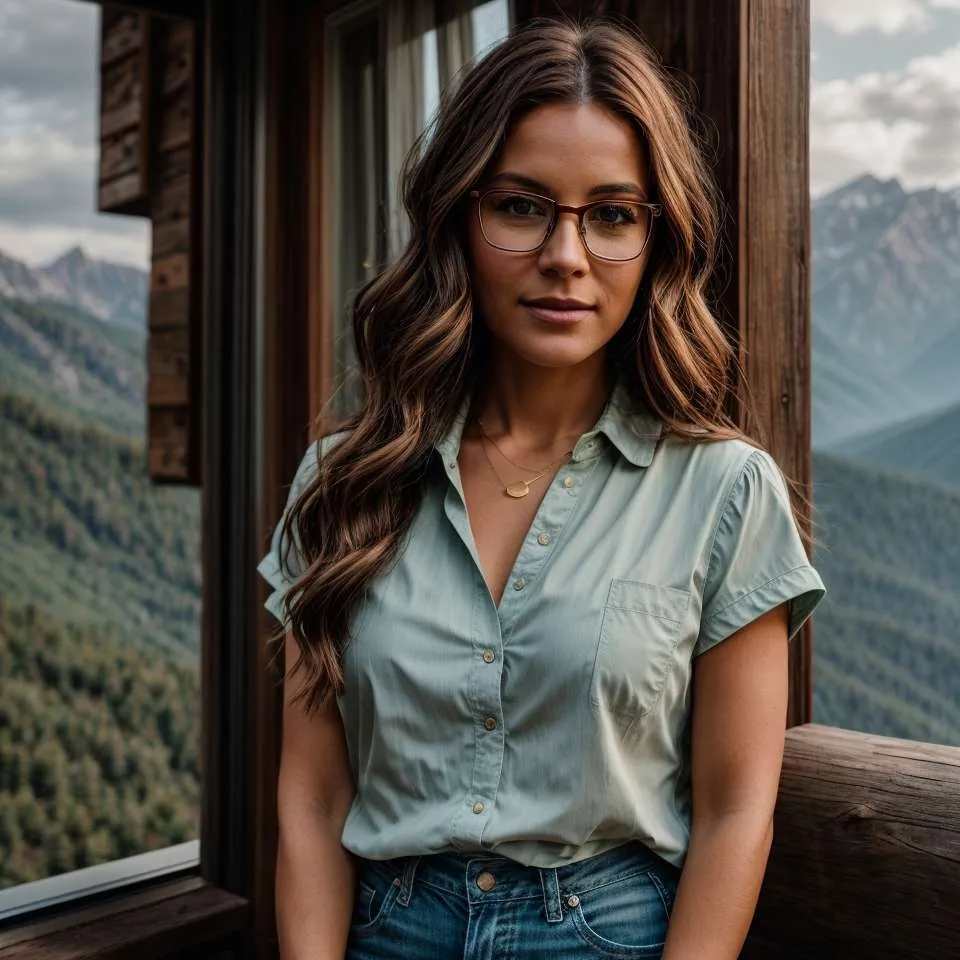
Marcella Raskin is a talented writer and editor with a deep passion for the dynamic realm of clothing colors and patterns. Armed with a strong background in Journalism, she crafts engaging content that empowers readers to select the perfect shades for their outfits. Her pieces provide an in-depth exploration of color trends and expertly curated fashion advice. Beyond her work, Marcella loves discovering new places, connecting with local designers, and advocating for sustainable fashion choices. She is devoted to helping individuals make enlightened color choices for their attire.
Reviewed By: Joanna Perez and Anna West
Edited By: Lenny Terra
Fact Checked By: Matthew Mansour
Photos Taken or Curated By: Matthew Mansour
